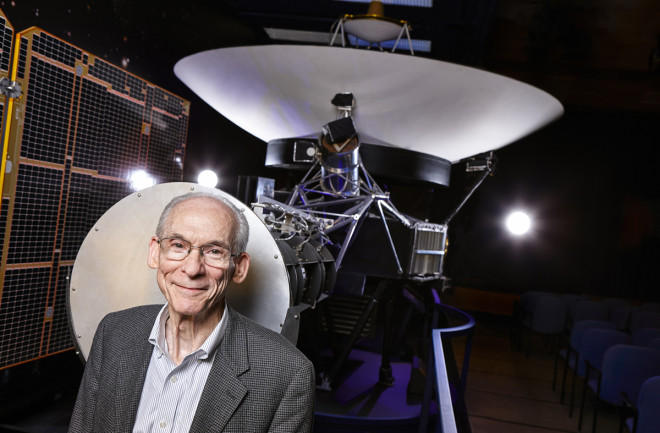Ed Stone is the kind of guy who can glimpse the outer limits of human exploration just by looking at a water faucet.
We are huddled in his minimalist Caltech office, discussing his four decades of work on NASA’s twin Voyager space probes. Suddenly he decides that our conversation is getting too abstract. In the summer of 2012, Voyager 1 became the first probe to enter interstellar space, and Stone wants me (and you) to really feel what that means. So off we go to a small kitchenette down the hall for a hands-on science explainer.
Everything you need to know about the journey to interstellar space is right there in the sink, Stone explains. He pushes the handle, and a fat stream of water hits the sink’s bowl, creating a circular splash. The area within is like the space around Earth and the other planets: a region flooded by the solar wind, a fast-moving outward stream of particles from the sun. The area at the periphery of the sink is like interstellar space, where relatively cold gas between the stars sloshes weakly inward toward us. And in between?
“Notice how a thick ring forms here? That’s the termination shock,” Stone says excitedly. His finger slowly traces the circle in the sink. The edge between two competing flows of water — one pushed outward by the faucet’s stream and one flowing around the ring toward the drain — mirrors the sharp boundary between the solar wind and the interstellar stream. As in the sink, the boundary takes the form of a shock wave, a dramatic disruption that divides inside from outside (though it spreads in three dimensions, making it into a bubble rather than a ring). That is how Stone knew when Voyager 1 crossed into interstellar space: It passed through a barrier of turbulent particles, like a tiny boat navigating the sink bowl, traversing from inside the circle to outside.

